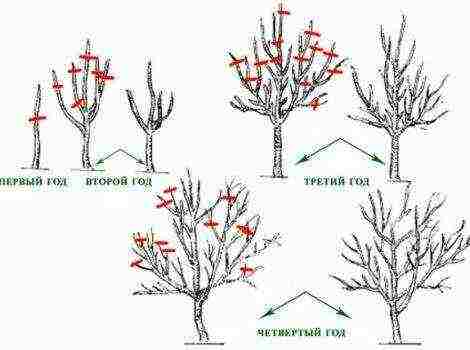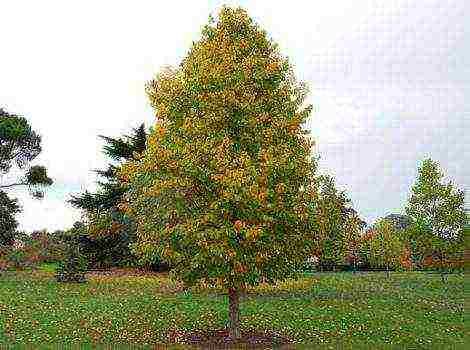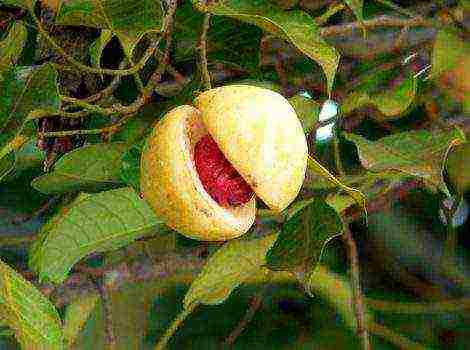Content
Even in a small area, a rare summer resident refuses to plant a plum tree. Plum is an extremely popular stone fruit crop among gardeners.... In many gardens in Russia, you can find one of its most interesting varieties - Stanley, with a description of which you will get acquainted in this article.
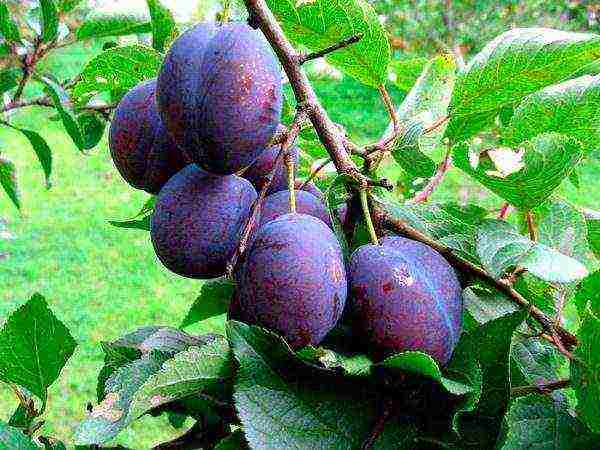
The group of Hungarian plums, to which Stanley belongs (he is Stanley, he is Stanley), combines varieties with elongated dark purple fruits, a clear abdominal seam and dense sugary pulp. Hungarians lend themselves well to drying, and it is from them that the best prunes are made..
Variety history
At the beginning of the 20th century, Professor of the Department of Horticulture at Cornell University Richard Wellington experimented with crossing the famous French plum Prune d'Agen and the American Grand Duke... The result of selection was the Stanley variety, created in 1926. He inherited the excellent taste and bright aroma of fruits from the tender "mother" - a French woman. From the "father" -American - resistance to freezing of flower buds.
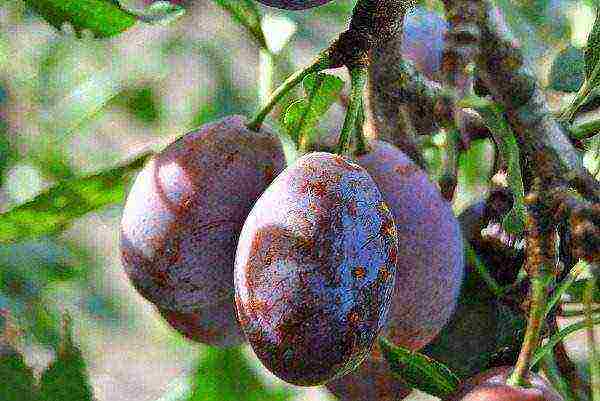
Today, Stanley plum is planted in large areas in temperate zones around the world. Almost all European and American prunes are made from it. In Russia, Stanley has been cultivated since the 80s of the XX century. Despite the fact that the variety is recommended for the southern regions, it can be found much further north. - in the Central Black Earth region, Moscow region and even in Siberia. However, where frosts occur in September, it is still better not to risk it. Stenley - late ripening plum, may not have time to ripen before the cold weather.
Characteristics of the variety
| External features | The tree grows up to 3 meters in height. The crown habit is sparse, rounded. The stem is straight, with an average degree of peeling, dark gray.
Shoots are red-violet, slightly ringed, without pubescence. The length of the internodes is about 3.5 cm. The leaf petioles have anthocyanin pigmentation. On the underside of the leaf plate, there are a pair of yellowish aromatic glands. Stipules are lanceolate, light green. |
|---|---|
| Bloom | The Stanley plum blooms approximately in mid-April.
Generative buds are located on the shoots of annual growth and bouquet branches. Each bud forms 1-2 flowers. The flowers are white, up to 3 cm in diameter. The petals are slightly closed, not corrugated, with a wavy edge. Pedicel length - up to 2 cm. |
| Fruiting | This variety begins to bear fruit from the 4th year of life. Fruits reach removable maturity by the beginning of September.
The fruit is a very large single-celled drupe. The average weight is 45 grams. The cover color is dark purple, the main color is green. The shape of the fruit is obovate (the apex is round, the neck is elongated), with a clearly pronounced abdominal suture, unequal. The skin is without pubescence and streaks, with brown subcutaneous dots and a waxy coating, poorly separated from the pulp. The pulp is yellow, with a strong aroma, dense. The taste is sweet with a slight sourness (tasting score 4.8 points). The bone is separated well. |
| Demanding soil | The Stenley variety loves fertile soil. The need for regular feeding is very high. Otherwise, the fruits become smaller. |
| Sustainability | Stanley is declared as a highly winter-hardy variety. It is able to withstand frosts down to -34⁰С.
Drought resistance is average. With a prolonged absence of watering, it drops the fruits. Highly resistant to polystygmosis (red spot) and shark. It is affected by gray rot and aphids. |
| Yield | Fruiting steadily. Gives up to 60 kg of fruits from one tree. |
| Purpose of fruits | Universal use: fresh, for drying, for making juices, compotes, jams, for pickling and freezing. |
| The need for pollinators | Partially self-fertile, sets fruit even without pollinators. However, the best yields are obtained if there are plums of the Chachakskaya, Empress, President or Bluefri varieties nearby. |
| Transportability and keeping quality | At normal temperature, the fruits of the Stanley plum are stored without loss of quality for up to 15 days. In the cold (+ 1⁰С) - up to 25 days.
Fruit transportability is very good. |
Pros and cons of Stanley plum
Summarizing all the characteristics of this variety, one can draw conclusions about its advantages and disadvantages.
Of the merits:
- excellent fruit taste and versatility;
- frost resistance;
- self-fertility;
- high and stable yield;
- good indicators of keeping quality and transportability;
- resistance to shark and red spot.
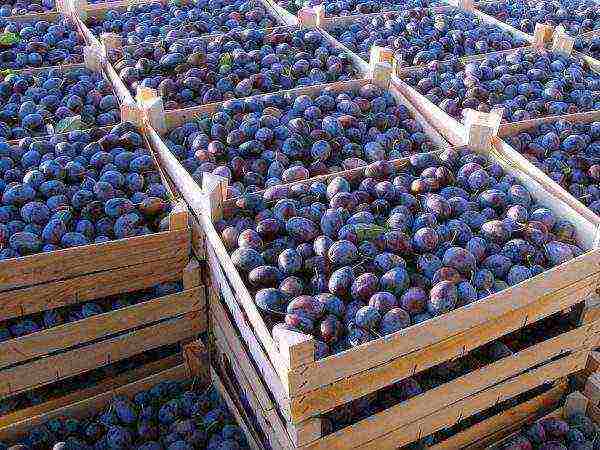
Disadvantages:
- instability to gray rot;
- exactingness to soil fertility;
- low drought resistance;
- late ripeness.
Stenley variety - from seedling to harvest
To grow Stanley on your site, you need a general knowledge of the rules of plum cultivation and a little patience. When choosing a seedling, you need to take into account the characteristics of your climate.... If you plan to grow Stanley in a warm region, you can buy your own rooted seedling. If the climate is cold, it is better to take it on the rootstock.
Site selection
The place for planting the Stanley must be chosen the warmest and sunniest. It is good if it is protected from drafts. The tree will feel great on the south side of a gentle slope or at least behind a low fence, if it doesn't shade too much.
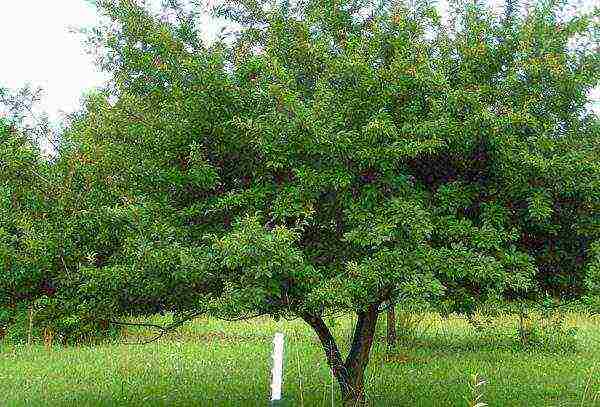
Stenley is a moisture-loving variety, but it does not tolerate stagnant water at all. Therefore, lowlands, swampy areas and places with a high standing of subsoil waters are not suitable for this drain.
It should also be remembered that this American guest loves to “eat”. It is necessary to assign her a sufficiently fertile piece of land with an area of at least 9 square meters. The best options are slightly alkaline and neutral sandstone or loam... Acidic soil will need to be deoxidized with dolomite flour.
Planting a seedling
Stenley plum is best planted in early spring before sap flow begins. Practice suggests that with autumn planting, this variety takes root worse.
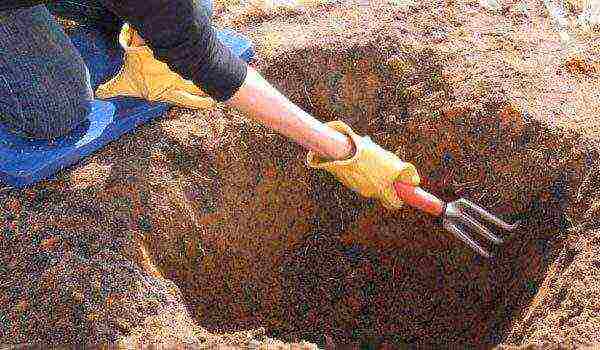
The planting hole must be prepared in the fall, before the onset of frost. In this case, the soil will have time to settle properly. The size of the pit and the laying technique depend on the fertility of the soil.
| Fertile soil | Insufficiently fertile soil | |
|---|---|---|
| Pit depth | 60 cm | 100 cm |
| Pit diameter | 80 cm | 100 cm |
| Bookmarking technique | The topsoil is removed and deposited separately.
The bottom of the landing pit is dug up. The removed top layer is mixed with humus in a 1: 1 ratio and poured into a mound on the bottom of the pit. |
The sod is removed, crushed and laid separately.
Mix 2 buckets of well-rotted manure, a liter can of ash and chopped sod. The mixture is placed on the bottom of the pit. Up to half the depth, a mound is poured into fertile soil from another place. |
Planting a Stanley seedling does not have any technological features. It is carried out according to the general rules:
- Slightly off the top of the hillock a support stake is driven in at the bottom of the landing pit... The height must be calculated so that the top of the support is just below the first lateral shoots of the seedling.
- The landing pit is good spill water.
- Place the seedling next to the support and tie it up... In this case, it is necessary to ensure that the root collar is above the ground.
- Spread the roots over the mound and gradually sprinkle with good earth, trampling tightly.
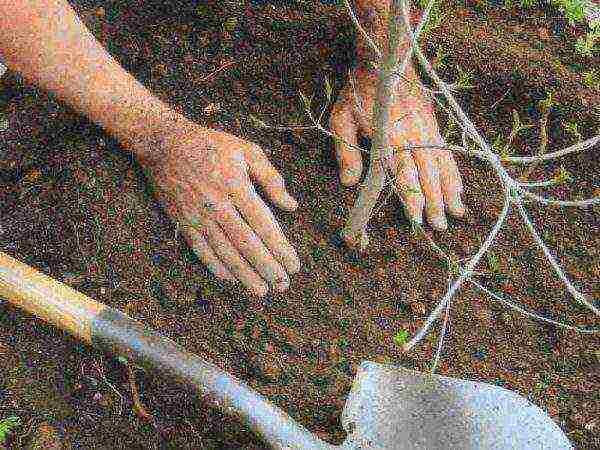
- Again check the location of the root collar... Ideally, it will be three fingers above the surface of the soil.
- Step back about half a meter from the trunk and with a hoe or flat cutter make a groove in a circle... Pour about three buckets of water into it.
- To mulch near-trunk circle.
Further care
Immediately after planting, the seedling needs to be "trimmed". Plum gives large annual growth, therefore the earlier the formation of the crown, the better.... In a one-year-old seedling, you need to pinch the apical bud so that the lateral shoots go into growth. The future skeletal branches of the tree will be formed from them. In a two-year-old seedling, it is worth shortening the central conductor and side branches by one third.
In the first season after landing in a permanent place, Stanley requires a lot of attention.... Water the seedling regularly. Several times during the summer, you can spill a solution of "Heteroauxin" at the rate of 2 tablets in a 10-liter bucket of water. It is not worth polishing the trunk circle so as not to disturb the injured roots. It is better to mow the grass.
In the second year, it's time to start feeding. Their scheme will depend on the phase of the plant's life.
| From the 2nd year after planting until fruiting | Fruiting tree | |
|---|---|---|
| Spring | In early May - urea solution (2 tablespoons per 10 liters of water) | Before flowering - a solution of urea (2 tablespoons) and potassium sulfate (2 tablespoons) per 10 liters of water. |
| Summer | In early June - with a solution of nitrophoska (2 tablespoons per 10 liters of water) | While pouring berries - a solution of urea (2 tablespoons) and nitrophoska (3 tablespoons) for 10 liters of water. |
| Autumn | End of August - a solution of potassium sulfate (2 tablespoons) and superphosphate (2 tablespoons) in 10 liters of water. | After harvesting the fruits - a solution of potassium sulfate (2 tablespoons) and superphosphate (3 tablespoons) in 10 liters of water. |
In addition to mineral dressing, Stenley plums can be offered organic matter. Every year, at the beginning of summer, a bucket of manure and a glass of dolomite flour should be added to the soil of the trunk circle.
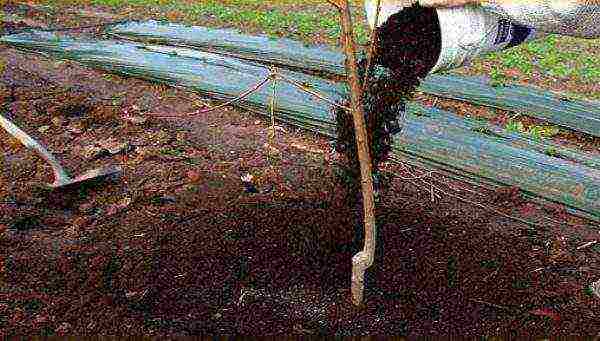
For the prevention of diseases and pests, it is imperative to do sanitary pruning. Once every seven years - anti-aging.
Disease and pest control measures
Moniliosis (gray rot) is a fungus that spoils the fruit of the plum. At the initial stage, it looks like a brown spot on the skin. This formation grows rapidly and is covered with a gray "fluff" carrying fungal spores.
Stenley plum can be severely affected by moniliosis... In order to prevent misfortune, it is necessary to spray the tree twice a season with the fungicide "Abiga-Peak" (before flowering and during the pouring of fruits). If the tree does get sick, you will have to prune the infected branches and burn them. Treat healthy parts with the preparation.
Plum Stanley is very fond of pollinated aphids... Colonies of these small greenish-brown insects severely damage young shoots and plum leaves. For prevention, it is good to plant a tree with marigolds. They attract ladybirds, the natural enemies of aphids. In case of severe damage to the plant, you can use "Intavir". In doing so, however, it should be remembered: insecticides kill not only pests, but also insects useful for the garden.
-
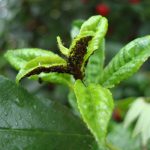
- Aphids on plum leaves
-
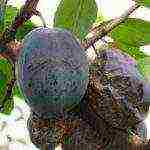
- Moniliosis on plum fruits
Afterword
Stenley plum certainly deserves the attention of Russian gardeners. If you master the art of copulation, you can try this variety without even spending time growing a seedling.... There is no doubt that the efforts will pay off.
